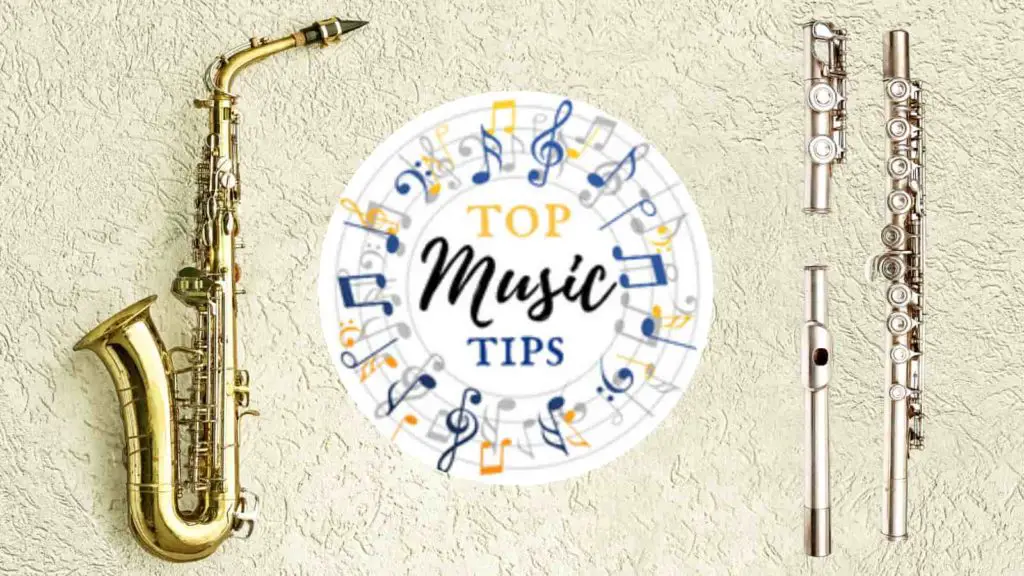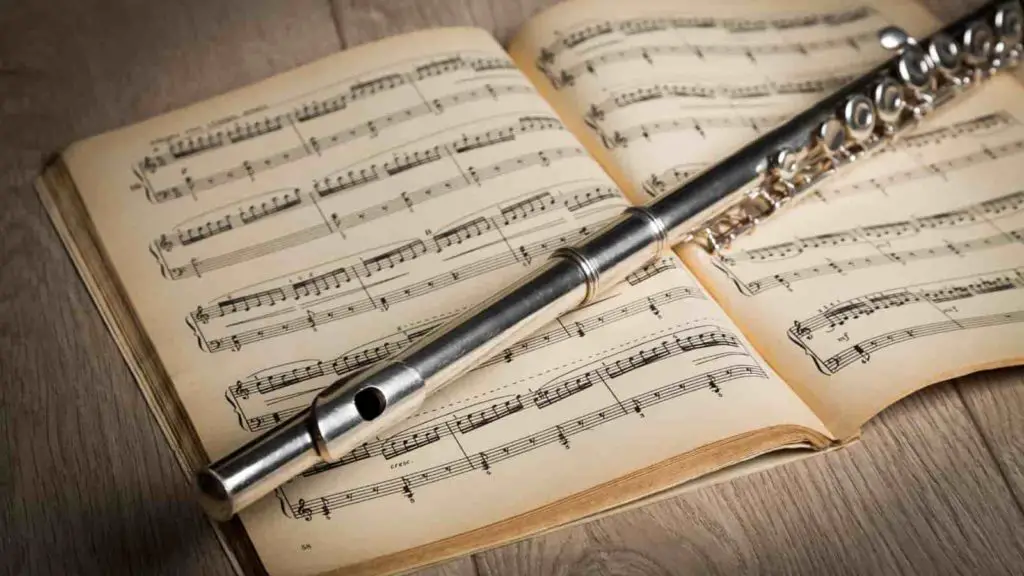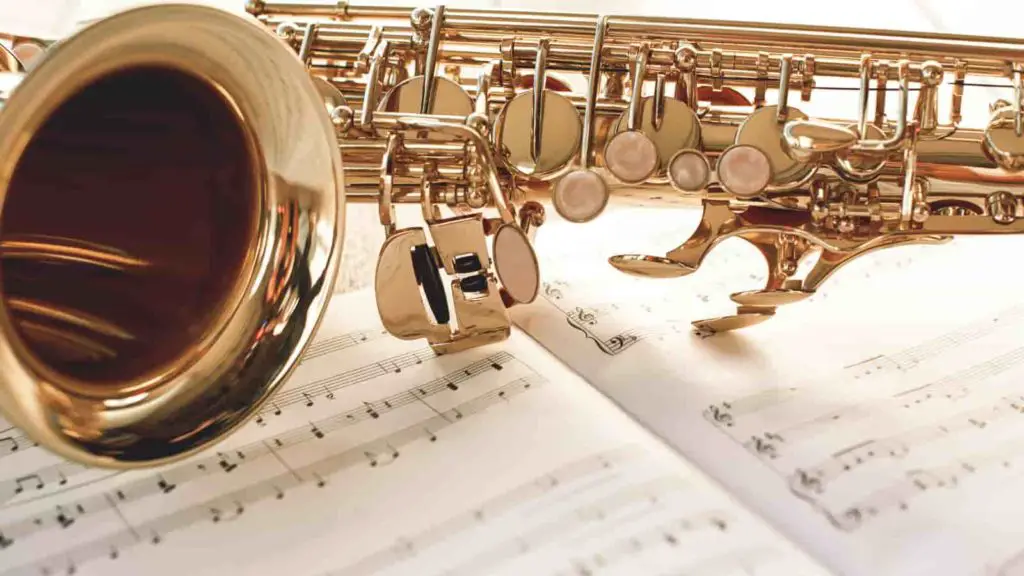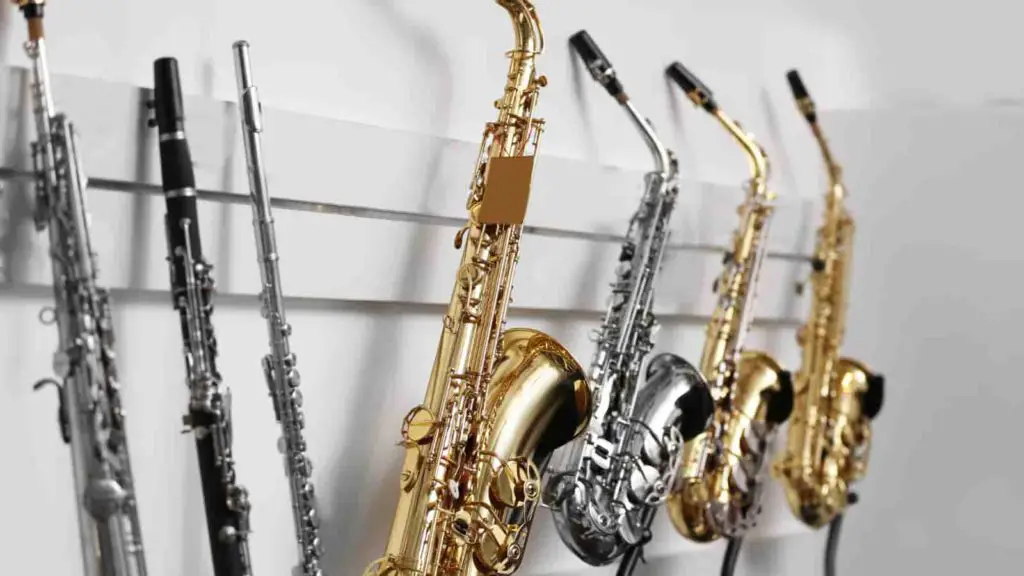Are you trying to decide between playing flute and playing saxophone? Do you need help deciding which instrument is easier to play so you can pick the one that is right for you? This article will give you information on both instruments to help you decide which one is right for you.
Generally, the flute will be more difficult to learn, especially in the early stages due to more complicated fingerings used in beginning songs. At times, beginning flutists also have a more difficult time producing a sound than beginning saxophonists.

There are, however, always exceptions and some students have a more natural ability to one instrument over the other. Some people struggle with the saxophone but have an easier time with the flute. Let’s unpack in more detail what goes into playing each instrument to help you better understand what goes on.
History of the flute
Flutes are some of the earliest known musical instruments going back to paleolithic times. The flute developed and changed over time, though it never strayed from its basic design. It has become one of the most standard and recognizable instruments around the world.

History of the saxophone
The saxophone is a relatively new instrument by comparison, with its inception in 1846. The saxophone was invented by Adolphe Sax, a Belgian instrument maker who also played flute and clarinet. He wanted to combine the projection aspects of a brass instrument with the facility and technique of a woodwind instrument.

How do you make a sound on the flute?
Creating a sound on a flute comes from blowing air over a sound hole in a certain way, similar to when you play a musical note on a glass bottle. The difference between blowing into a glass bottle and a flute comes from your embouchure and your aperture.
Your embouchure is basically the shape and position of your mouth when you play an instrument. Every woodwind and brass instrument has a different embouchure, and each one comes more naturally depending on a person’s physical characteristics.
These physical characteristics can be the size of your lips, your oral cavity inside your mouth, or other similar aspects.
For flute, the corners of your mouth have to be firm, but not too tight, and the bottom of your lip rests on a mouthpiece plate. You then need to be able to blow air in a downward direction into the flute’s head joint to create a tone.
Your aperture is the opening of your mouth as you blow the air. The aperture can change to be more open or closed depending on what notes you are playing. Generally, higher notes need a smaller aperture and lower notes need a more open aperture. This takes practice to get used to and is something many people can have a difficult time with early on.
How do you make a sound on the saxophone?
Creating a sound on saxophone comes from blowing air into a mouthpiece and against a wooden reed that vibrates, much like a clarinet. The mouthpiece and reed are placed on the rest of the saxophone, which helps project the characteristic sound of the instrument.
Saxophone embouchure comes from a player curling a thin amount of your bottom lip over your bottom teeth, then placing your top teeth on the top of the mouthpiece. Your bottom lip acts like a cushion against the reed, allowing the reed to vibrate when you blow air into the mouthpiece.
🎵 Note: Learn all about the different parts and types of Saxophone Mouthpieces here!
Reeds are thin pieces of wood cut very carefully to specific sizes depending on the type of saxophone you play, the style of music you play, and the strength of your embouchure. They are held onto the mouthpiece with a ligature, which is basically a small clamp with one or two screws securing the reed in place.
How do you play different notes on the flute?
Once you produce a tone on the flute, you can change what note you are playing by pressing down various keys. The keys cover holes on the flute, making the length of the flute longer or shorter.
Generally, the more keys you press down, the lower the note is, and the more keys that are left open, the higher the note is. This can also change, however, depending on how fast your air is. What this means is that you can play different notes with the same fingering by adjusting how fast you blow into the flute head joint.
As mentioned earlier in the article, some of the finger combinations you have to use are relatively complex if you have not done anything like this before, but with practice, you develop the muscle memory needed to play the flute.

How do you play different notes on the saxophone?
The basic concept of playing different notes on the saxophone is the same as flute, however, the finger combinations you have to use early on are generally simpler to use than on the flute.
With the saxophone, you play the instrument with your left hand on the top and your right hand on the bottom. Your thumbs stay on the back of the instrument closer to your body, where your other fingers go in front of the instrument. Your fingers should hover over the keys even when you are not pressing them down.
While holding the saxophone, you also wear a neck strap to help support the weight, since saxophones are made of a heavier metal than other woodwind instruments. See more about this topic in our recent article: Marching Saxophone Guide.

What else is difficult about playing flute and saxophone?
Other factors contribute to both flute and saxophone having difficult elements. Being successful really comes down to what comes more naturally to you, how much you practice, and how motivated you are to improve.
The flute plays in a higher register than the saxophone, meaning you have to learn notes written above the staff with ledger lines more so than on the saxophone.
Saxophone usually stays on the staff in beginning music, and if you do play music with ledger lines, they are not written as high as the flute.
The flute has a more difficult time playing at a louder dynamic if you have to play low notes. The instrument in general takes more air and beginning flute players often talk about feeling dizzy after playing long notes. It is important to practice breathing exercises to develop the endurance needed to play the flute.
Saxophones have a more difficult time playing at a softer dynamic at first, since they are designed to be able to project at louder volumes. Beginning saxophones have to spend a lot of time practicing long tones at all dynamics so they can play at different volumes with a good sound.

As mentioned above, saxophones also have a unique embouchure where you curl your lip over your bottom teeth and your top teeth rest on the mouthpiece. Sometimes, this feels unusual when people start playing the saxophone, and can be difficult at first to get used to. If you notice your bottom lip is getting sore from your teeth pushing up, it is good to take a break from playing so you do not bite your lip.
How do I start playing the flute?
There are many amazing resources today helping people learn all about the flute. You can take private lessons, find classes online, or even watch beginner tutorials to learn how to start playing.
Top Tip: One of my favorite ways for kids to find a great music teacher is by looking on www.outschool.com This is amazing data base of teachers will have a variety of lesson options. You will be able to find a teacher that fits your budget as well as your style of learning.
The following video is an excellent tutorial by The Flute Channel going over the basics of learning flute. Flutist Amelie walks you step by step through making your first sound up to playing the first notes on the flute.
How do I start playing the saxophone?
There are also many amazing resources for helping you learn to play the saxophone. Taking private lessons, online live classes, or video tutorials can all help you get started when learning the saxophone.
The following video by McGill Music Sax School helps you get started on saxophone by guiding you through setting up the instrument, making a sound, and learning the first notes.
What does an advanced flutist sound like?
After years of practice and developing proper technique, you can learn very advanced repertoire. The flute is a versatile instrument crossing over into many genres such as classical and jazz.
Below are two video examples for both classical and jazz flute.
The first video is James Galway playing J.S. Bach’s Orchestral Suite No. 2- Badinerie. Galway is one of the most renowned flutists, having an entire flute festival named after him. This piece is a classic example of the flute that many will recognize.
The second video is more contemporary jazz flute by the late Yusef Lateef playing “Yesterdays.” Lateef played a variety of instruments, but was a master of the flute; this piece showcases the beautiful expressive qualities of the instrument and highlights Lateef’s skill as a flutist.
What does an advanced saxophonist sound like?
Saxophone has an exceptionally wide range of advanced repertoire incorporating a variety of techniques. Most advanced repertoire falls under the classical or jazz genres, but saxophones also appear regularly in more popular mainstream genres.
Below are two video examples of advanced classical and jazz saxophone recordings.
Otis Murphy is a leading example for contemporary classical saxophone. Here is his performance of Fantasia by Claude T. Smith. The piece incorporates various tempos and styles letting you hear the wide range of expressive qualities possible on the saxophone.
The Atom Saxophone Quartet is a leading ensemble with four world-class musicians. Below is their rendition of the jazz classic Autumn Leaves, showcasing jazz saxophone at a professional level. The ensemble consists of two altos, one tenor, and a baritone saxophone; sometimes, the ensemble switches one alto to soprano saxophone.
Up Next
We hope this article helped you learn all about flute versus saxophone! If you want more info about Teaching Beginner Flute Check out this article Top Tips for Teaching Beginner Flute. Good luck with playing your instrument and stay tuned for more articles on Top Music Tips!
Disclaimer: This post may contain affiliate links. We only recommend high-quality products that are used and recommended by real musicians. If you use these links to buy something we earn a small commission.
